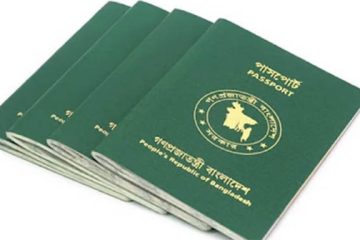Lowest growth in five years
Remittance earnings face serious jolt
Bangladesh received $11649.59 million as wage earners’ remittance in the fiscal 2010-11, showing a little growth of 6.3 per cent over the same period of the previous fiscal. “The primary reasons for the declining remittance inflows are due to political crisis in the Middle East (ME), Libya and steady fall in manpower export,” official sources said. The Bangladeshi nationals working abroad sent remittance worth $10987.40 million in the previous fiscal (2009-10) recording 13.40 per cent growth over the same period of previous fiscal (2008-09). In absolute terms, the inward remittances increased by only $662.19 million in the fiscal year 2010-11 as against the same period of the previous fiscal. However, the country received $1038.13 million as remittance in June 2011, the last month of the preceding fiscal, sent by Bangladeshi nationals through official channel, which stood at $892.15 million in June last year, according to an official data prepared by Bangladesh Bank (BB). “The flow of inward remittances recorded a little growth in the preceding fiscal as overseas job market for the local nationals remained almost stalled due to prolonged crisis in the Middle East and Libya,” an official of BB told The New Nation on Monday. “Manpower export of the immediate past fiscal was not up to the mark as fresh recruitment opportunity for Bangladeshis in the traditional job markets abroad remained almost stalled resulting a little growth in remittance earnings,” he added. Experts raised concern over the present trend of remittance flow and feared that remittances could even decline this year and worry that a diminished flow could have a negative effect on economic growth. “It is a matter on concern that inward remittance recorded lowest growth in five years in the immediate past fiscal year due to the shortfall of manpower export,” Prof Abu Ahmed, a noted economist and teacher of Dhaka University told The New Nation on Monday. He said, “The slow growth of remittance would squeeze the country’s foreign reserve, put pressure on import payments and make dollar costly against local currency.” Prof Ahmed said growth of remittance flow faces serious setback due to job cuts, a freeze in wage hikes and the tendency of host countries to hire more unemployed locals and the return of a large number of Bangladeshi workers’ once living in Libya. According to an official figure, about 35,000 Bangladeshi workers have already returned home from the conflict-torn country. “If the present crisis in ME prolongs and political turmoil’s spread to other countries of the region, where thousands of Bangladesh nationals have been working for many years, the growth of remittance earnings may face a serious jolt in the current fiscal,” he warned. “Considering the country’s economic impact, the government should engage its all-out diplomatic efforts to its counterparts immediately in order to resolve the deadlock of manpower export crises, he suggested. Bangladesh witnessed a steady growth in the remittance inflow over the last three decades with the expansion of the overseas job markets aboard for its nationals. In the 2006-07 FY, remittance inflow in Bangladesh stood at $5978.47 million, recording 24.50 per cent growth than the corresponding period of the previous fiscal year 2005-06. Remittance earnings in the fiscal 2005-06 stood at $4801.88 million. Bangladesh received $7914.78 million remittance in FY 2007-08 as against FY 2007-08, recording 32.39 per cent growth against the same period of previous fiscal. It recorded 22.42 per cent growth in FY 2008-09 compared to the same period of previous fiscal when the country received remittances worth $9689.16 million. In a recent study, it was found that the global economic downturn cut the number of Bangladeshi migrant workers by 17.86 per cent in 2009. The year 2010 saw the decline in the number of skilled migrants and a rise in unskilled migrants, said the research study titled ‘Pattern and Trends of Labour Migration 2010: Achievement and Constraint.’ However, the other Asian countries could maintain a growth trend, said the study conducted by the Refugee and Migratory Movements Research Unit (RMMRU). About 438,736 Bangladeshis went abroad on jobs during the fiscal year 201-11 while a total of 427,202 local nationals secured overseas jobs during the same period of previous year (2009-10), according to a provisional data of the Bureau of Manpower, Employment and Training (BMET). The BMET data also showed that some 650,059 Bangladeshis secured overseas jobs in the fiscal 2008-09. Presently, about 70 lakh Bangladeshis are working in different countries of the world. Most of them are employed in the KSA, the UAE, Kuwait, Oman, Qatar, Bahrain, Libya, Malaysia, Singapore, Britain and America.
Courtesy of The New Nation




















